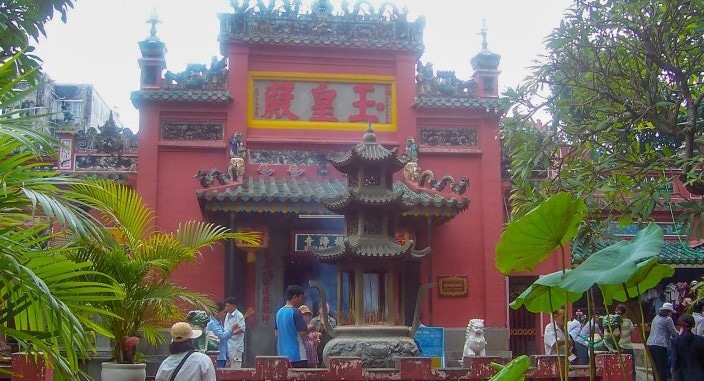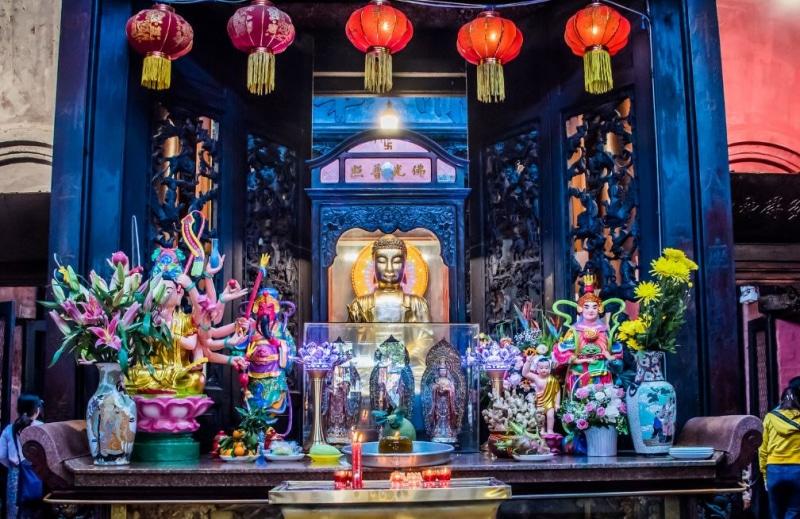Jade Emperor Pagoda
Removed from Unnamed collection





+ 2
Source: Alex, Diatomic Tours Images may be subject to copyright. Learn More
When you find yourself in Ho Chi Minh City, the Emperor Jade Pagoda, affectionately known as the Tortoise Pagoda, is a must-see. It's one of the top five shrines in the city and has a rich history that dates back to the early 1900s. Crafted by Cantonese immigrants from Guangzhou, this pagoda beautifully showcases the Mahayanist branch of Buddhism, which is widely practiced across Vietnam.
Step inside the main hall, where the Emperor Jade, or Chua Ngoc Hoang, known as the 'God of the Heavens,' holds court. With the help of two assistants, he decides who is worthy of entering the heavenly realm. Those who don't make the cut encounter the fearsome 'God of Hell' on the left. This deity ushers sinners into one of the ten levels of hell. The temple walls are adorned with intricate carvings, vividly illustrating the various punishments awaiting wrongdoers. It's both mesmerizing and a bit chilling.
In another hall, you'll find Kim Hua, the goddess of fertility. She's surrounded by statues of women and children, offering hope to childless couples seeking her blessing. Upstairs, Kuan Yin, the goddess of mercy, graces her own altar. Her presence is essential in any Taoist temple. This isn't just a historical site; the Emperor Jade Pagoda is a bustling, active shrine frequented by locals who come to pray, offer flowers, and light candles and joss sticks. The temple can feel bustling and cozy with worshippers moving through its narrow, dimly lit passageways. The air is thick with incense smoke, creating a mystical atmosphere that enhances its allure. As you wander through, take a moment to appreciate the serene koi pond, where turtles bask in the sun, adding a tranquil touch to this sacred space.
 Alex, Diatomic Tours
Alex, Diatomic Tours  Vietnam
Vietnam